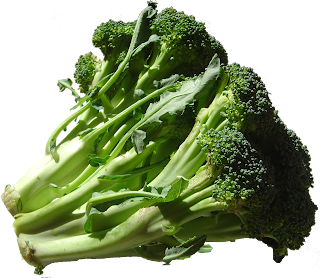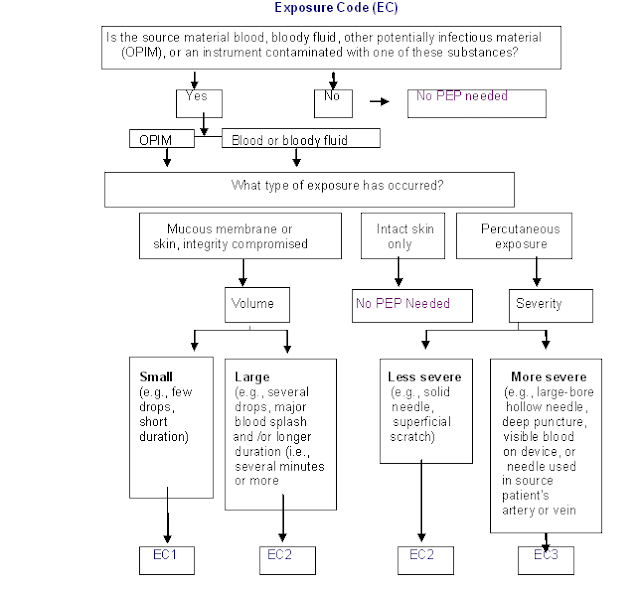Citrus limetta, alternatively considered to be a cultivar of Citrus limon, is a species of citrus, commonly known as sweet lime, sweet lemon, and sweet limetta.
It is native to South- and Southeast Asia and cultivated in the Mediterranean Basin.
In Iran it is called Limu Shirin
In North India, it is commonly called mousambi, mosambi, or musambi .
In South India, it is called Moosambi in Kannada and Malayalam, Bathaya Kaayalu Cheeni Kaayaluin Telugu, and sathukudi in Tamil.
In Nepali, it is called Mausam.
In Sindh it is known as mosami.
In France it is sometimes called bergamot; it should not be confused with Citrus bergamia, the Bergamot orange.
It is a different fruit from the Palestinian sweet lime and from familiar sour limes such as the Key lime and the Persian lime.
Sweet lime is almost exclusively served as juice, and is the most common available citrus juice in India, Pakistan and Bangladesh. The juice is commonly sold at mobile road stalls, where it is freshly pressed, sometimes served with a salty chat masala or kala namak, unless the vendor is told not to add it.
Like most citrus, the fruit is rich in vitamin C, providing 50 mg per 100 g serving. In Iran it is used to treat influenza and common cold.
The tree is used for ornamental purposes as well as for graft stock.
Mosambi or Sweet lime is also known as the mousambi, musambi (in North India), Moosambi (in South India), Mishta nimbuka (in Sanskrit), Meeta nimbuka (in Hindi), sweet lemon (in Persian) and sweet limetta. It is a citrus fruit (belongs to the Citrus family) which was first originated in the regions of Mediterranean Southeast Asia.
Health Benefits Of Mosambi:
Mosambi is a versatile fruit with a sweet and sour taste. This amazing fruit renders terrific nutritional value. This fruit is widely consumed in the form of drinks, jams, pickles, candies, snacks and sorbets. The juice of this fruit is also versatile and is used in salads and to marinate meat. Some of the health benefits of mosambi are given below.
Sweet lime or Mosambi juice is very famous juice all through the India, Pakistan and Bangladesh and can be found in almost every season (however, sufficiently available in July, August and November, March.) at road side shops and fruit mandi. People generally like drinking its juice during summer season by adding some salty chat masala, kala namak and etc.
Benefits of Mosambi for Digestive System
Stimulates Digestive System Functioning
Mosambi has a high content of flavonoids that stimulate the digestive system by increasing the secretion of digestive juices, acids and bile. Hence, mosambi juice is often recommended to people suffering from indigestion, irregular bowel movement and other gastrointestinal problems. Thus, it aids digestion by neutralizing the acidic digestive juices produced by the stomach and flushes out the toxins from the excretory system. The compounds found in this fruit are beneficial for peristaltic motion. Sweet lime also helps in controlling diarrhea, nausea and vomiting.
Cures Digestive System Disorders
Mosambi helps in curing some common digestive system disorders like nausea, indigestion, irregular bowel movements and etc.
Boosts Digestion Process
It boosts up the digestion process as it helps in neutralizing the extra acids produced by stomach as well as flushes out body toxins through excretory system.
It keeps peristaltic motion healthy and helps in controlling nausea, vomiting and diarrhea.
Relieves Constipation
Sweet lime makes bowel tract smooth and provides relief from the constipation as it is contains good level of dietary fibers which acts as roughage (purgative property) and makes stool soft and easy passage.
Promotes Healing of Ulcers
Flavonoids found in it called Limomin Glucoside has anti carcinogenic, antioxidant and antibiotic properties thus helps in healing internal wounds called ulcers (oral and peptic).
Benefits of Mosambi in Scurvy Disease
Treats Scurvy
Scurvy is a disease caused by the deficiency of vitamin C. This disease is characterized by bleeding, swollen gums, frequent bouts of flu and cold, ulcers in the mouth and tongue, and cracked lip corners. The sweet limes can stop the bleeding of gums. Mix mosambi juice with a few drops of pure water and add a pinch of black salt to the mixture. This mixture should be applied to the affected gums for an immediate relief from bleeding gums. Halitosis (bad breath) can be eliminated by sipping lime juice and sucking on lime rinds.
Fulfills Need of Vitamin C
Regular intake of mosambi (whole or juice) helps in reducing all the symptoms of scurvy disease by fulfilling the level of required vitamin C in the body.
Controls Bleeding Gums
Sweet lime makes gums stronger than before and helps in controlling bleeding from gums and bad breath problem.
Benefits of Mosambi Juice/Sweet Lime Juice
Energizes Body
Regular intake of mosambi juice helps in relieving fatigue and weakness due to motion sickness.
Relieves Heart Burn and Acidity
Drinking a glass of mosambi juice on daily basis helps in relieving from heartburn and acidity.
Prevents from Sunstroke and Dehydration
It has ability to prevent from the sunstroke and dehydration during summer season as it contains lots of water, essential vitamins, electrolytes and minerals.
Reduces Muscle Cramps
It is highly preferred by the sport persons and athletes after their hard work out sessions as it fulfills the water level and reduces muscle cramps.
Maintains Blood Sugar Level
Sweet lime juice is very beneficial for the diabetic patients if the mixture of mosambi juice, amla juice and honey is taken with empty stomach in the early morning.
Prevents from Eye Disorders
Its antioxidant and anti-bacterial nature provides eye protection from various infections like conjunctivitis and age related muscular degeneration.
Improves The Immune System:
The regular consumption of mosambi juice brings about an improvement in the overall heart functioning. Thus, it ensures proper blood circulation and contributes to a much healthier immune system. Vitamin C boosts the immunity levels and prevents cold.
Benefits of Mosambi Juice in Pregnancy
Promotes Better Growth of Fetus
Sweet lime juice is good source of potassium, calcium and vitamin C which are necessarily required by the growing fetus for the proper growth and development.
Promotes Functioning of Brain and Nervous System
Its cooling property keeps brain and nervous system functions smooth thus prevents from brain fever and mental issues during pregnancy to both mother and baby.
Boosts Blood Circulation
Mosambi juice has high level of vitamin C which boosts the blood circulation all through the body thus keeps both mother and baby healthy.
Benefits of Mosambi Juice in jaundice
Regularizes Liver Functioning
Mosambi juice is considered that it reduces the symptoms of jaundice by regularizing the liver functioning and controlling bile secretion in the body thus highly preferred by the doctor for the people suffering from jaundice.
Cures Respiratory Problems
It helps in curing asthma and other respiratory problems if mosambi juice is taken by mixing some cumin seeds and dry ginger powder.
Prevents from Infection
Sweet lime provides relief during tonsillitis and its painful symptoms as it is rich in vitamin C which reduces infections of cold, cough and fever as well as soothes irritating, dry, itchy and sore throat.
Benefits of Sweet lime Juice for men
Strengthens Body and Improves Sperm Count
Regular consumption of mosambi juice enhances appetite level, purifies blood as well as raises the sperm quality and count among men.
Benefits of Citrus limetta Juice for Hair
Its antiseptic and antibacterial properties add lots of benefits towards beauty therapies which are mentioned below:
Strengthens Hair
It helps in strengthening hair because of its richness in vitamins and minerals.
Treats Hair Loss
Mosambi juice helps in treating split hair ends and dandruff problem.
Promotes Hair Growth
It makes hair bright, shiny, long, natural black and strong as it provides all the required nutrients for the hair growth and maintenance.
Provides Natural Color to Hair
It is rich source of copper mineral which involve in the formation of pigment melanin thus provides natural color to the hair.
Benefits of Citrus limetta Juice for Skin
Provides Wonderful Skin
Drinking mosambi juice regularly is very good for getting wonderful skin as it contains high vitamin C level (used in manufacturing various skincare products and medicinal supplements in order to treat dry, rough skin, improving skin tone, speeding up healing and so many.
Removes Dark Pigmentation and Spots
It has mild bleaching and cleansing property and helps to get rid of dark pigmentation, spots, acne, pimples, blemishes and etc.
Lightens Skin Tone
It provides glowing, radiant and smooth skin by reducing the scars of insect bite and lightening the skin tone if consumed regularly.
Detoxify Body
Sweet lime juice helps in detoxifying the body which provides natural glow and shine to the skin.
Cures Dark and Cracked Lips
It helps in lightening the dark skin on lips as well as curing cracked lips.
Other Health Benefits of Sweet lime
Used to Prepare Various Medicines
Oil extracts from mosambi is used in manufacturing various medicines (balms, inhalers, vaporizers and etc) treating respiratory problems because of its anti-congestive property.
Prevents from Infection
Its richness of vitamin C helps in boosting immunity level which ultimately helps body to stay at bay from various infections and disorders like heart disorders, improper blood circulation, cold, flu and etc.
Prevents from Bone Problems
Sweet lime provides protection against rheumatoid arthritis, osteoarthritis, inflammations and swellings thus good to maintain the health of bones.
Regularizes BP and Cholesterol Level
It helps in maintaining normal cholesterol level, blood pressure and weight loss if a glass of little warm water is taken with mosambi juice and honey.
Removes Body Toxins
It contains high level of potassium electrolyte which manages proper blood flow all over the body thus detoxifies kidneys, liver and bladder by removing toxins which ultimately reduces occurrence of infections and urinary disorders.
Prevents Accumulation of Uric Acid
Its antioxidant nature prevents accumulation of uric acid and bad effects of free radicals in the body by flushing out all the unnecessary uric acids and neutralizing free radicals.
Nutritional Benefits of Mosambi/Sweet Lime per 100 g
Energy: 43 kcal
Carbohydrate: 9.3 g
Water: 88 g
Sugar: 1.7 g
Dietary fibers: 0.5 g
Fat: 0.3 g
Protein: 0.7-0.8 g
Vitamins
Vitamin C: 50 mg
Vitamin A: 20 IU
Minerals
Calcium: 40 mg
Iron: 0.7 mg
Phosphorus: 30 mg
Potassium: 490 mg






















